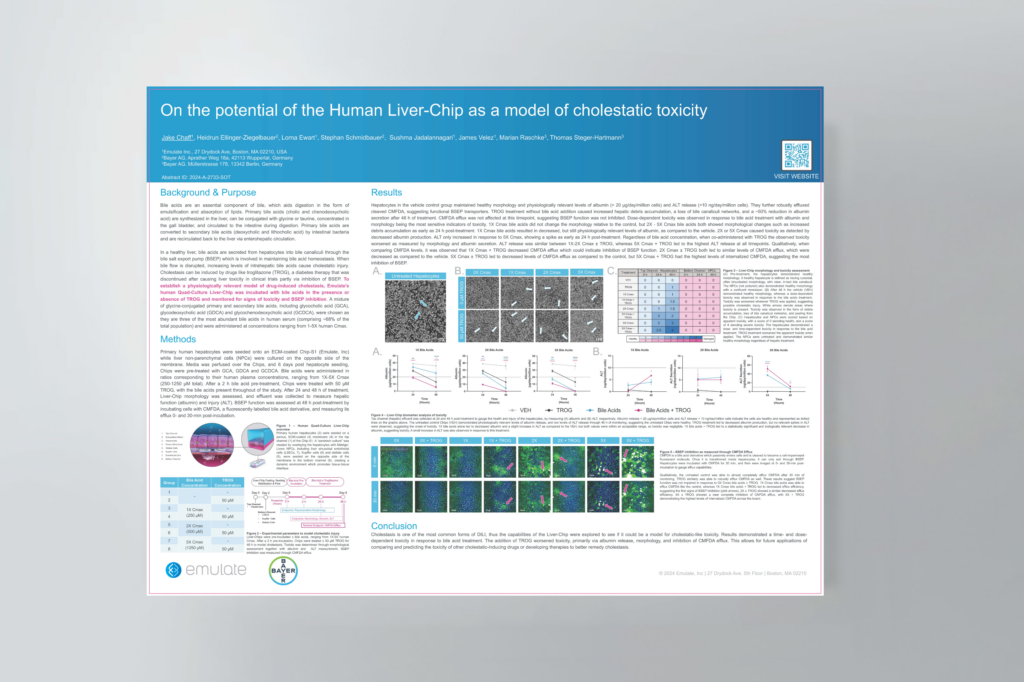Abstract
Bile acids are an essential component of bile, which aids digestion in the form of emulsification and absorption of lipids. Primary bile acids (cholic and chenodeoxycholic acid) are synthesized in the liver, can be conjugated with glycine or taurine, concentrated in the gall bladder, and circulated to the intestine during digestion. Primary bile acids are converted to secondary bile acids (deoxycholic and lithocholic acid) by intestinal bacteria and are recirculated back to the liver via enterohepatic circulation. In a healthy liver, bile acids are secreted from hepatocytes into bile canaliculi through the bile salt export pump (BSEP) which is involved in maintaining bile acid homeostasis. When bile flow is disrupted, increasing levels of intrahepatic bile acids cause cholestatic injury. Cholestasis can be induced by drugs like troglitazone (TROG), a diabetes therapy that was discontinued after causing liver toxicity in clinical trials partly via inhibition of BSEP. To establish a physiologically relevant model of drug-induced cholestasis, Emulate’s human Quad-Culture Liver-Chip was incubated with bile acids in the presence or absence of TROG and monitored for signs of toxicity and BSEP inhibition. A mixture of glycine-conjugated primary and secondary bile acids, including glycocholic acid (GCA), glycodeoxycholic acid (GDCA) and glycochenodeoxycholic acid (GCDCA), were chosen as they are three of the most abundant bile acids in human serum (comprising ~68% of the
total population) and were administered at concentrations ranging from 1-5X human Cmax.

